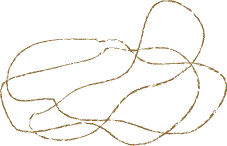Or search by topic
Number and algebra
Geometry and measure
Probability and statistics
Working mathematically
Advanced mathematics
For younger learners
Stringy Quads



- Problem
- Getting Started
- Student Solutions
- Teachers' Resources
Stringy Quads

Is it possible?
How could you convince someone else watching that your shape has just one line of symmetry?
Can you make any other quadrilaterals with just one line of symmetry?
Try again, but this time answer the questions after making one with $2$ lines of symmetry.
Try again, but this time answer the questions after making one with $3$ lines of symmetry.
Try again, but this time answer the questions after making one with $4$ lines of symmetry.
Why do this problem?
Possible approach
Ideally, this activity is best done where there is space for pupils to stand up and move, for example in a hall, or a classroom with the furniture pushed to one side, or outside. If this isn't possible, then you could ask children to stand near their tables or lay the string on their tables. Wherever you are, learners will need to be in groups of four (or three).
Key questions
Where are the lines of symmetry?
How could you convince me?
Are there any other quadrilaterals with exactly one/two/three/four line/s of symmetry? How do you know?
Possible extension
Ask children to try and convince you why the result for three lines of symmetry is true. This is by no means easy but listen for explanations which use sound logic and apply relevant properties of quadrilaterals. Learners might pose conjectures which focus on, for example, whether the number of lines of symmetry is linked to the factors of the number of sides of the shape being investigated.
Possible support
Some children may find it useful to research different quadrilaterals to start with and then analyse their characteristics, using the string to test the lines of symmetry. Some might find mini-whiteboards or paper useful for sketching.
Related Collections
You may also like
Bracelets
Investigate the different shaped bracelets you could make from 18 different spherical beads. How do they compare if you use 24 beads?
Cut and Make
Cut a square of paper into three pieces as shown. Now,can you use the 3 pieces to make a large triangle, a parallelogram and the square again?
Is a Square a Rectangle?
How many rectangles can you find in this shape? Which ones are differently sized and which are 'similar'?

